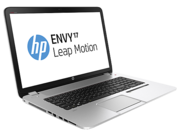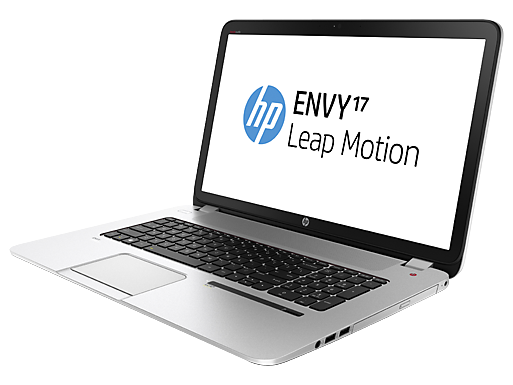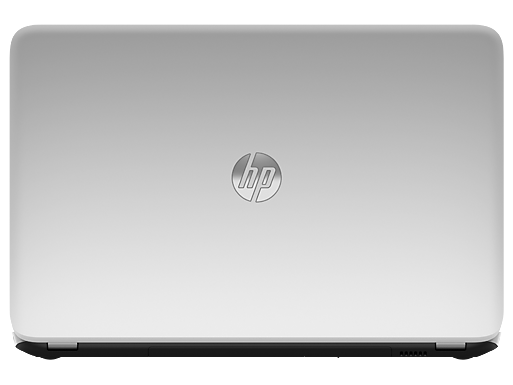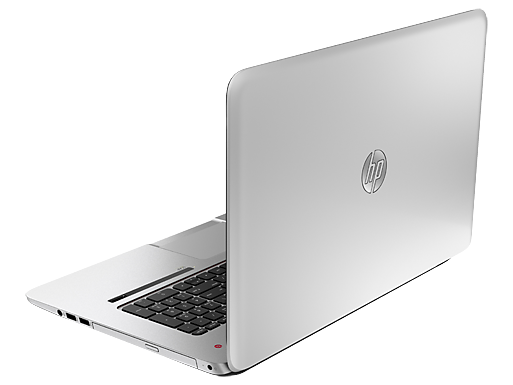HP Envy 17-j110eg
Specifications
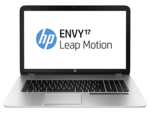
Price comparison
Average of 2 scores (from 4 reviews)
Reviews for the HP Envy 17-j110eg
New ground. HP is the first manufacturer to equip its media-focused flagship with Leap Motion capability and a touchscreen, but is this worth the extra cost of 60 Euros (~$82)? Additionally, the internals of the laptop have been refreshed, including a Full HD touchscreen, an Nvidia GT 750M GPU and an i7-4702MQ CPU.
Source: Notebookinfo
 DE→EN Archive.org version
DE→EN Archive.org versionSingle Review, online available, Medium, Date: 11/11/2013
Rating: Total score: 90% performance: 85% display: 85% mobility: 95% ergonomy: 85% emissions: 88%
Source: Tom's Hardware
 DE→EN Archive.org version
DE→EN Archive.org versionPositive: good equipment; up-to-date display and design; pleasant performance in all areas
Single Review, online available, Long, Date: 01/02/2014
Source: PC Online.com.cn
 zh-CN→EN Archive.org version
zh-CN→EN Archive.org versionPositive: Good performance; fashionable design. Negative: Relatively high price.
Single Review, online available, Medium, Date: 12/02/2013
Source: The Hikaku
 JA→EN Archive.org version
JA→EN Archive.org versionPositive: Good performance; good aluminum design; full HD display. Negative: Hot under load; noisy; DDR3 of the GPU.
Single Review, online available, Medium, Date: 12/26/2013
Comment
Model:
Featuring a "wave of the future" input device, the Leap Motion sensor; the HP Envy 17-j110eg works hard to be the latest and greatest thing to buy. For those unfamiliar with the technology, the Leap Motion sensor will allow users to control the device with the use of their hand gestures. Located on the right palm rest, once activated it will recognize a hand hovering above it, and gestures can be used to navigate programs and apps. As should be expected, programs and apps will need to be made compatible with this input, but the technology doesn't work well enough to be anything more than a novelty at the moment. This 17 inch desktop replacement features a full HD, glossy touch TN panel that is scratch resistant as well, along with the usual old keyboard and touchpad inputs.
Weighing in at 3.359 kg, this isn't the most portable machine. With the Intel Core i7-4702MQ 2.2 GHz, it isn't the most powerful machine out there on the market, but it should be more than enough for most users. Demanding games, might require use of lower settings, but this machine is certainly capable of running these games. This machine manages to outlast most similar sized machines on battery life, though not by much. 3 hours and 30 minutes of typical WiFi and light to moderate tasks is possible. At the end of the day, the most compelling reason to purchase this device is for early adopters who like new technologies, and can't wait to use the Leap Motion sensor. For most other purposes, there are likely better options out there.
NVIDIA GeForce GT 750M: Upper mid-range graphics card of the GeForce GT 700M series. Based on the Kepler architecture and manufactured by TSMC in a 28nm process.
Modern games should be playable with these graphics cards at low settings and resolutions. Casual gamers may be happy with these cards.
» Further information can be found in our Comparison of Mobile Graphics Cards and the corresponding Benchmark List.
Intel Core i7: The Intel Core i7 for laptops is based on the LG1156 Core i5/i7 CPU for desktops. The base clock speed of the CPUs is relatively low, but because of a huge Turbo mode, the cores can dynamically overclock to up to 3.2 GHz (920XM). Therefore, the CPU can be as fast as high clocked dual-core CPUs (using single threaded applications) but still offer the advantage of 4 cores. Because of the large TDP of 45 W / 55 W, the CPU is only intended for large laptops.
4702MQ: Haswell-based quad-core processor clocked at 2.2 GHz with Turbo Boost support up to 3.2 GHz. Offers an integrated HD Graphics 4600 GPU and a dual channel DDR3 memory controller.» Further information can be found in our Comparison of Mobile Processsors.












